COMPOUND BAR-LIMB MICROSCOPE WITH A 'CAPTAIN PERRY' ARM
MAKER:SWIFT
MODEL: 'PRESENTATION MICROSCOPE'
PLEASE SCROLL DOWN FOR MORE IMAGES
c.1877
THE SWIFT MICROSPECTROSCOPE
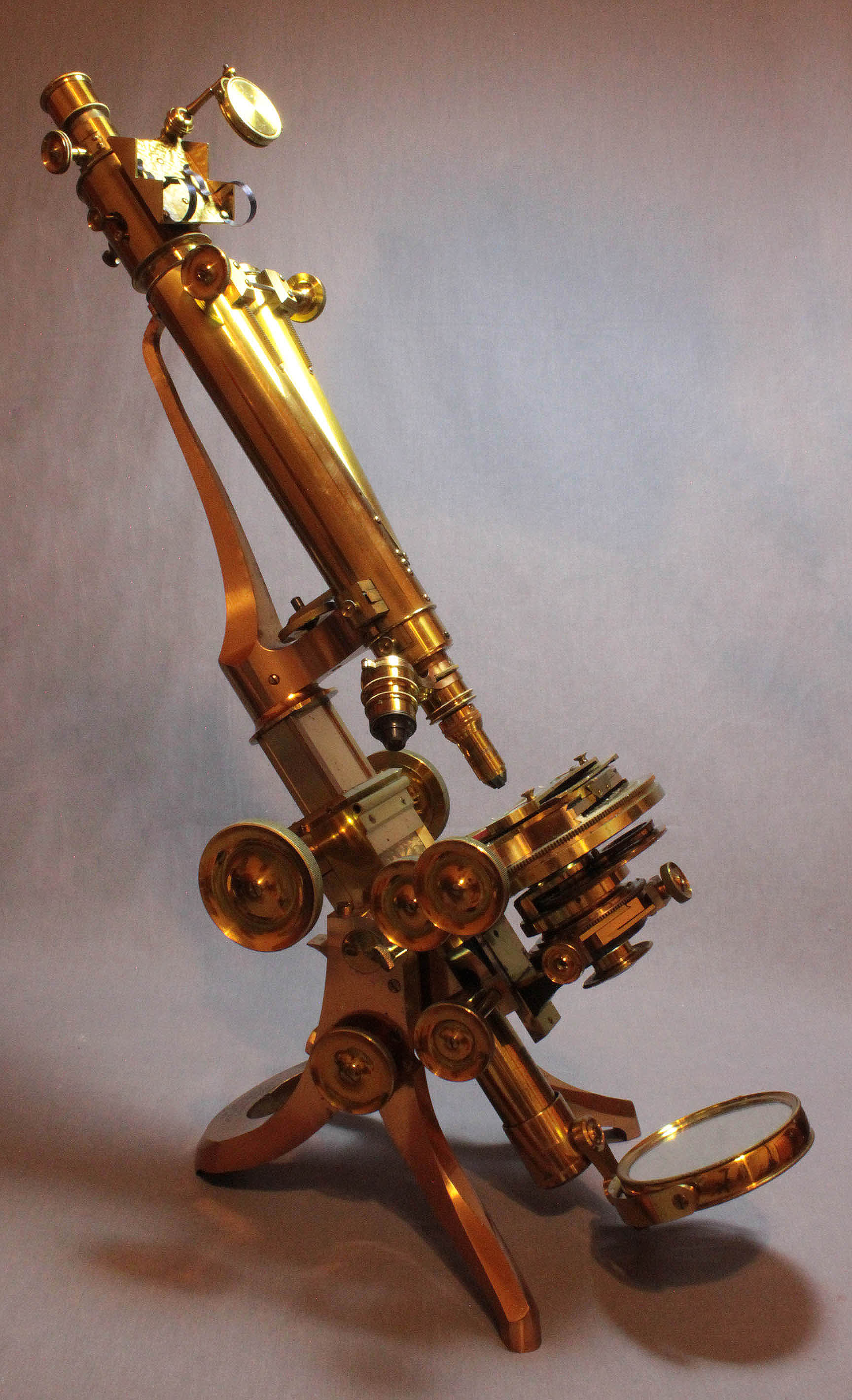
The outfit includes a Sorby-Browning type of microspectroscope eyepiece. The part that fits into the microscope tube measures 1 5/16 inches (33 mm) in diameter and the instrument is 5 7/8 inches (149 mm)in minimum length. It stores in the main case. It allows two spectra to be seen at the same time-the object and a reference spectra from an attached standard in a glass tube or alternatively, a slide, illuminated via the adjustable mirror on the side. Adjustments are provided to vary the main slit opening and also its width. Small knurled knobs sit on the end of a bar, one on each side of the instrument. This bar sits beneath the control for the width of the main spectrum, and slides down to cause a shutter to cover the accessory opening. A push-pull control slides the small reference prism over the slit. This allows the accessory prism to be moved over any position of the main spectrum. A rack and pinion mechanism allows the user to focus on the spectra. This example is similar to the original design described in John Browning's How to Work with the Spectroscope, pages 40-43, and 45-47, with differences pointed out below.
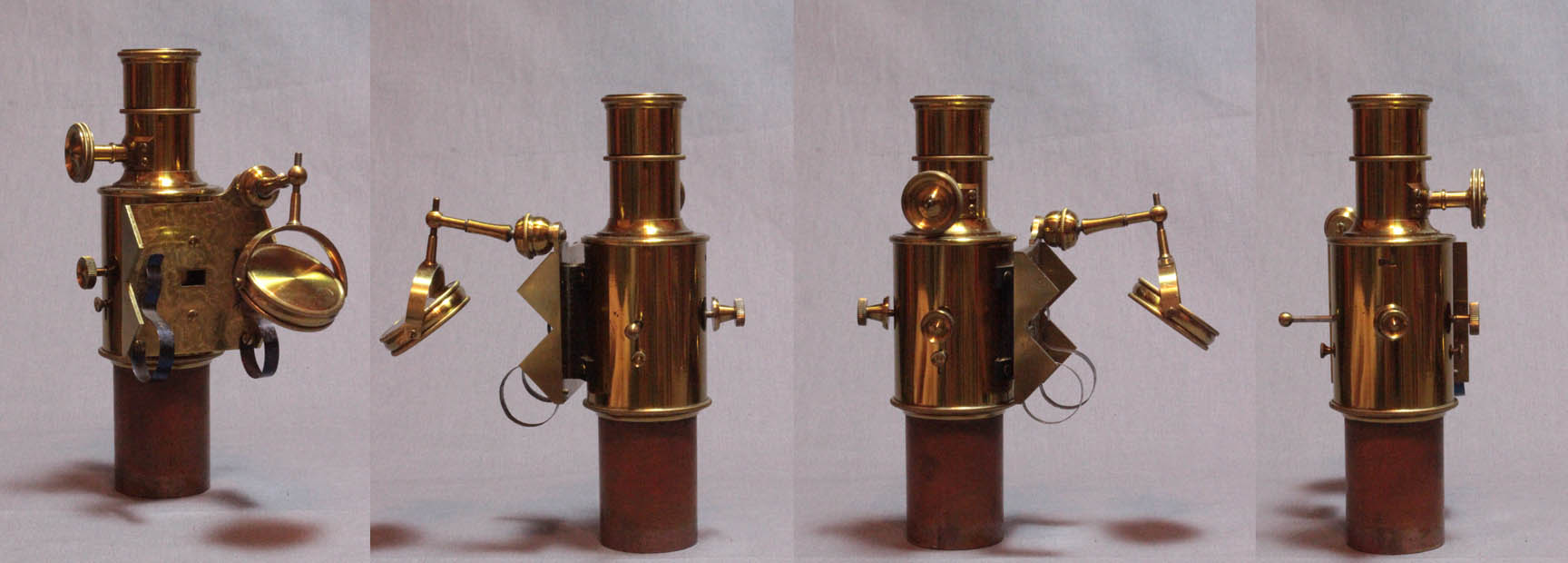
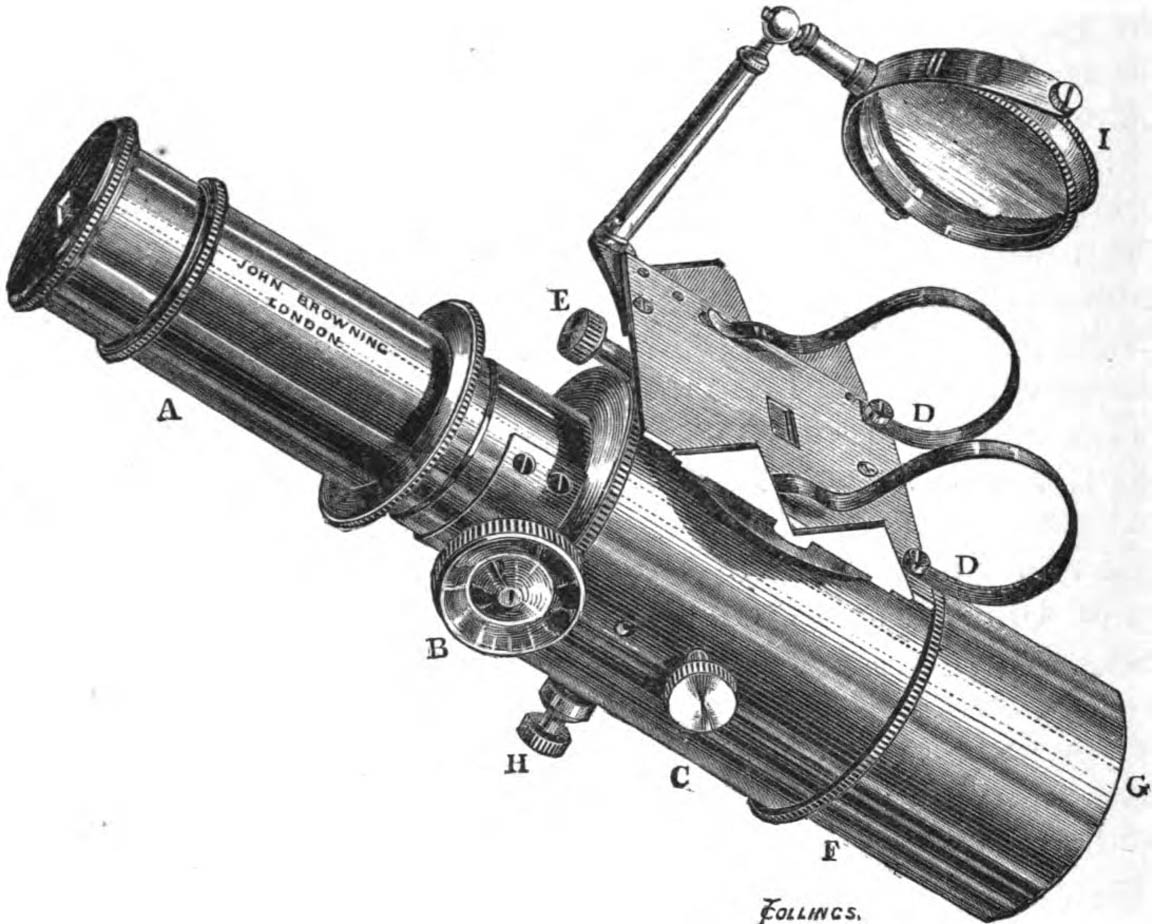
This engraving from Browning's book illustrates the controls of the instrument:
- Tube carrying the compound direct-vision prism with arrangement for coarse focusing the spectra
- Knurled knob for fine focusing the spectra in the eyelens
- Knurled knob to open or shut the slit vertically
- Apparatus to hold reference spectra in a tube or on a slide
- Knurled knob to open and close the slit for the secondary or reference spectrum
- Field lens in the eyepiece
- Tube made to fit the main tube of the microscope as would an ordinary eyepiece
- Knurled knob to regulate the main slit horizontally
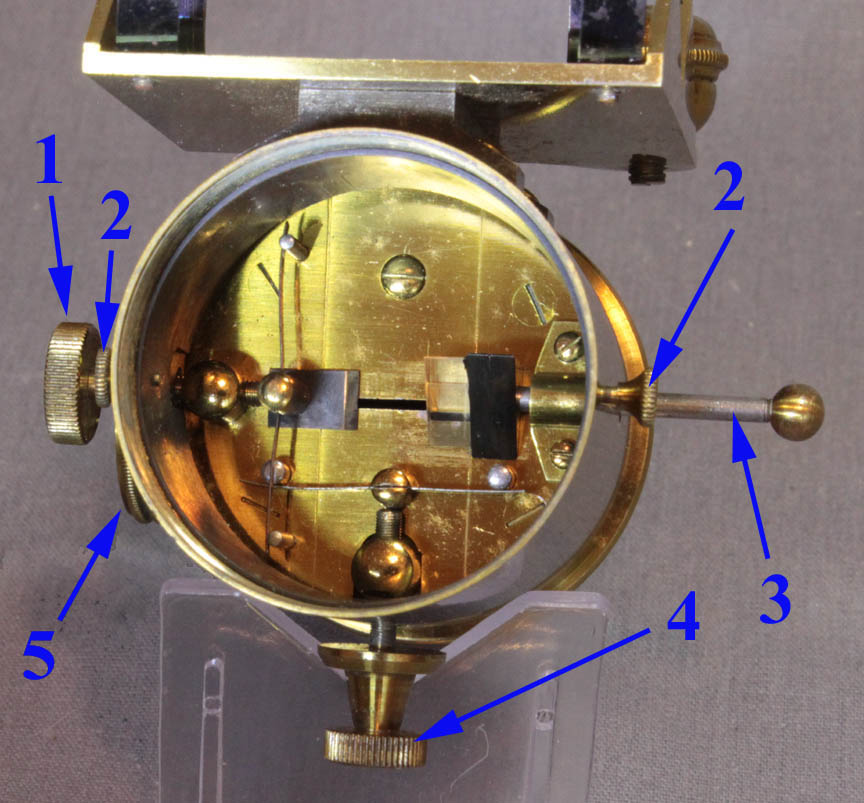
Shown here are the controls and inner workings of the far end of the instrument, with lower eyepiece lens removed:
1. Controls the width of the slit.
2. The controls that open or close the reference shutter on the side of the instrument.
3. Controls the reference prism so it can be positioned anywhere along the slit.
4. Controls the size of the opening of the slit.
5. Focusing knob.
This instrument has a few differences from the original Sorby-Browning version:
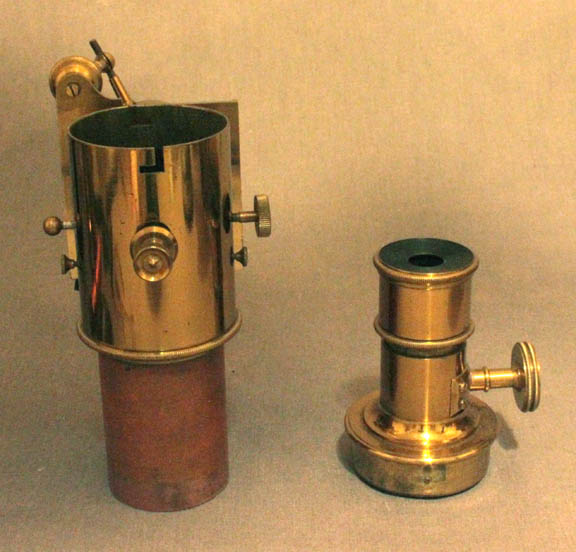
1. Instead of the top part being removable with the focusing mechanism left on, this instrument separates below that so that the focusing mechanism is not attached when the top part is removed.
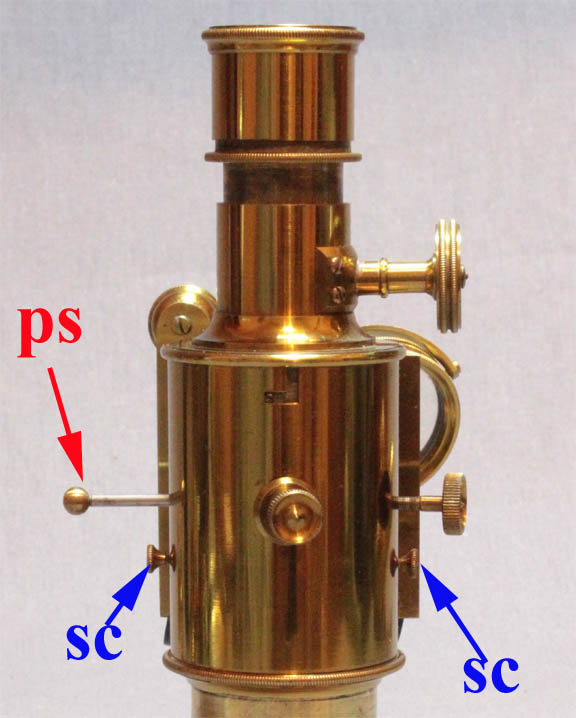
2. A sliding shutter closes off the accesory prism opening, controlled by two small knobs (sc), one on each side of the microspectroscope.
3. The reference prism is not in a fixed locaton like in the Browning instrument, but rather can be positioned anywhere along the course of the main spectrum by a sliding rod controlled with a small ball at its end (ps) serving as a handle.
HOW THIS INSTRUMENT IS USED(after Browning):
1. Remove A and open the slit by means of H
2. Using the focusing controls of the microscope (not B), focus on the slide object in the usual way
3. Replace A and gradually close the slit until a good spectrum is obtained, which may require the object to be slightly out of focus.
4. Using B, focus on the part of the spectrum that is of interest. Note that not all parts of the spectrum will be in focus at the same time.
5. When studying crystals, a 1/8 inch cardboard diaphragm below the object is helpful
Among interesting subjects are gelatin filters which if side by side can show their spectra next to each other for comparison.
Presumably, with this instrument, the entire upper portion including the focusing mechanism is removed instead of just the part on top of it.





